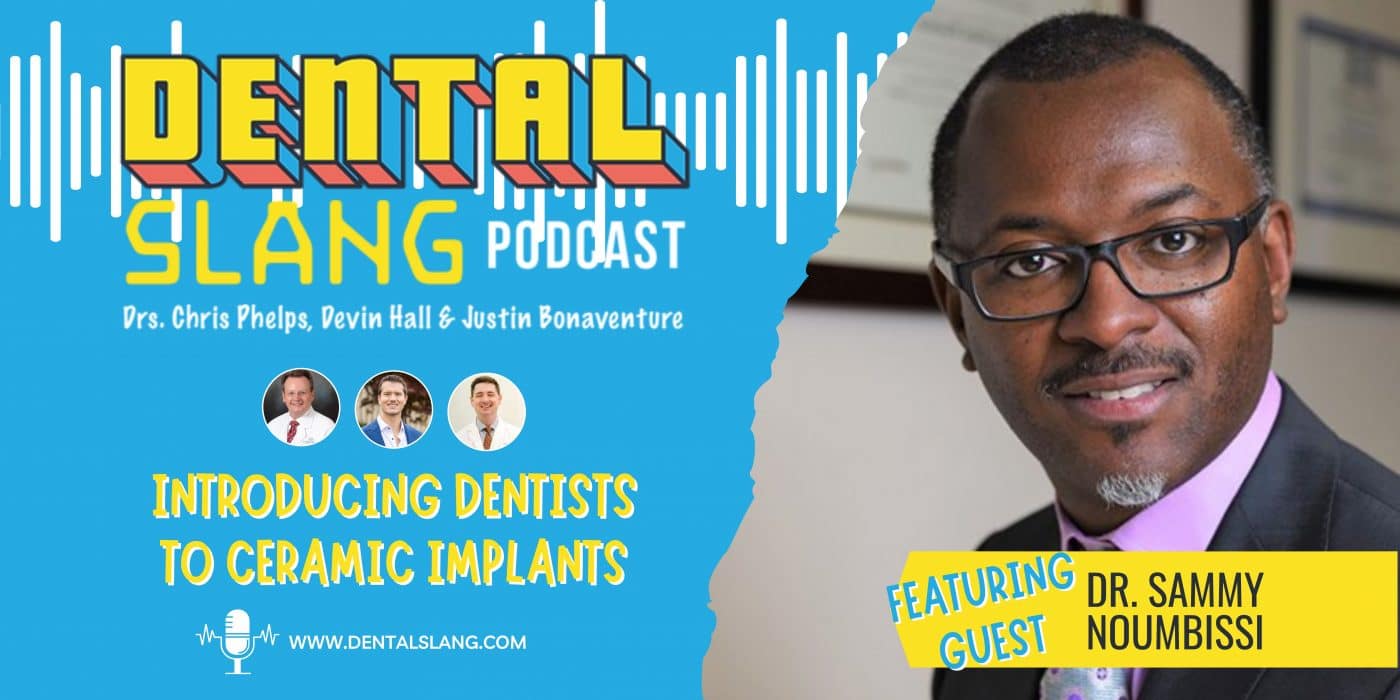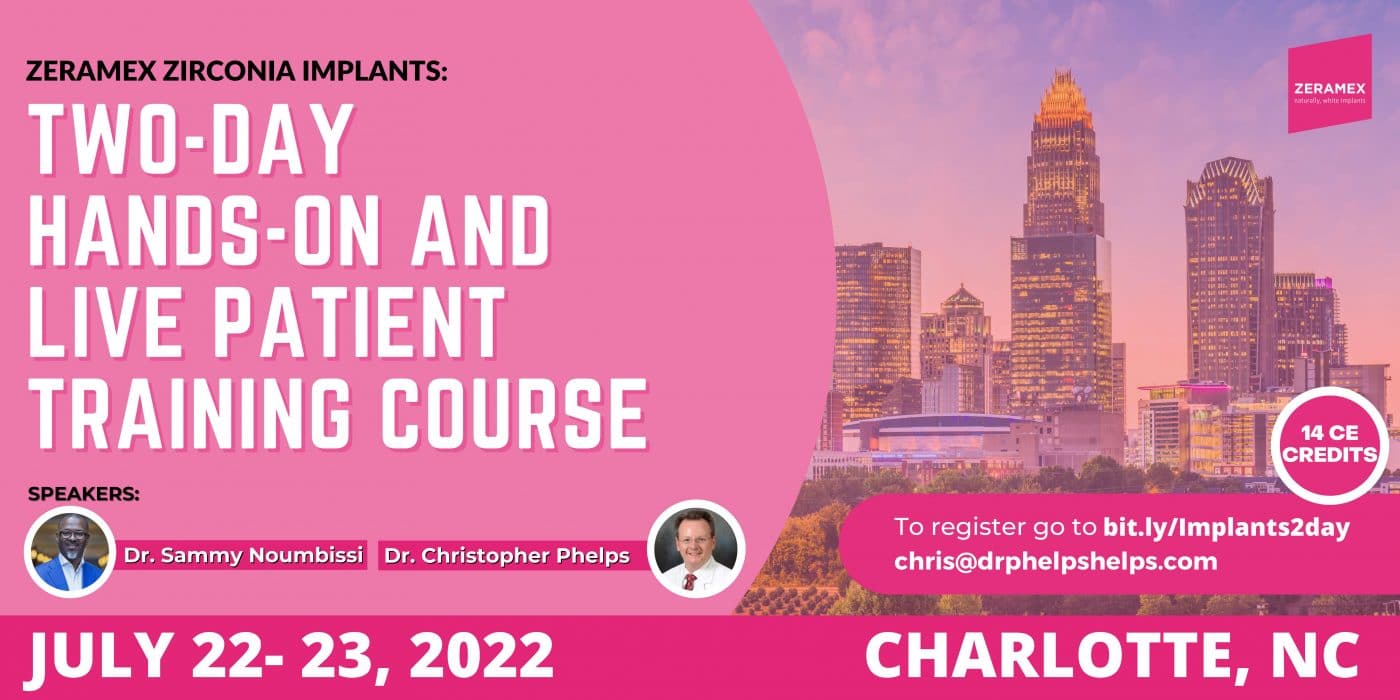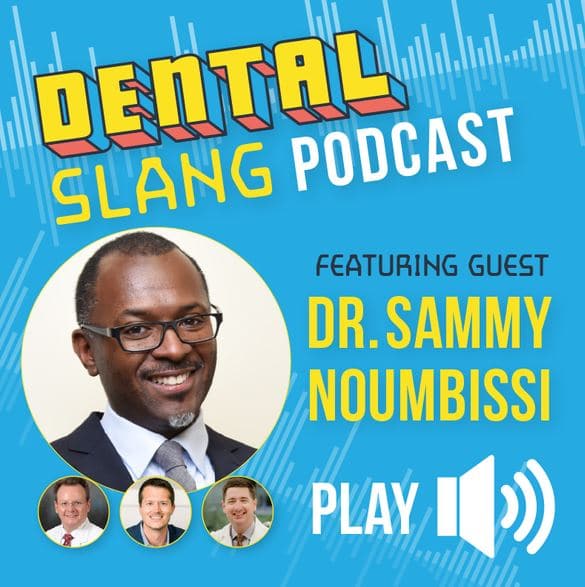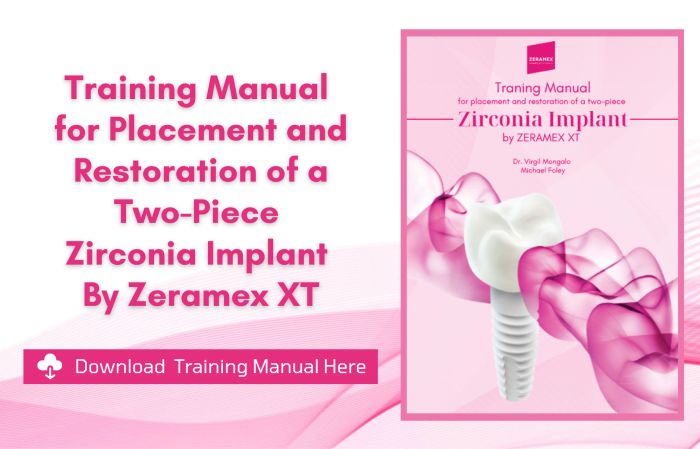Dental Slang – Dr. Chris Phelps – Apr 6, 2022
Introducing Dentists to Ceramic Implants with Dr. Sammy Noumbissi

Dr. Sammy Noumbissi is a dental surgeon and provider who changed the game decades ago by adding ceramic implants to his repertoire. While other dentists continued to use titanium implants.
Dr. Noumbissi built his practice by listening to his patients. His first decade as a dentist was traditional, working as a general practitioner and using titanium implants. But when he returned to practice on the east coast, he started to work with a different type of patient. The patients in his neighborhood prefer a holistic approach, and they began to ask questions about the kinds of materials he was using in his implants.
Dr. Sammy Noumbissi’s introduction to metal-free implants
His views on Ceramic Implants & how it led him to establish the International Academy of Ceramic Implantology
[9:18] Observing how society’s changing, that’s how I decided to get myself really deep into it (ceramic implants).
I’m passionate about ceramic implants and I’m trying to spread the word, so to speak, and I’m applying and submitting abstracts and topics to various implant associations and they won’t let me in, they won’t invite me in, they won’t let me come and speak or present this new technology. So, that’s where the frustration part was, where I decided – you know what; there’s a few people that I’ve trained, a few people with whom I share this passion and this belief that they are the next chapter in implantology; let’s have an association.
So I created the International Academy of Ceramic Implantology, which last August we celebrated our 10th anniversary. And the first event in Las Vegas had 20 people in the room. Now we have events where we draw upwards of a hundred and seventy five, two hundred people.
Who is driving the demand for Ceramic Implants?
[12:42] There were three phases in the last 10-12 years. There was a phase of nobody was aware or very few people were aware. There was a phase of denial, like, you know, it’s there, but I’m not going to look at it. And now we’re into a phase of the beginning, but it is starting very well of acceptance.
[13:10] I put the consumer of ceramic implants into two categories. There’s a primary consumer, which is us, the doctors. And there’s a secondary consumer because we essentially retail these implants to our patients. So in my experience, and I think, that of many others around the world, you find that today, still, it’s the secondary consumer – the patients that tend to walk into offices and say: “I am aware of this type of implant. I am concerned about metals. I have had allergies or my mother has allergies or whomever and I would really like to consider not having a metal alloy implant placed in my body.”
[13:58] So, what you find is that the patients are still driving this. They’re actually even pushing some practitioners into getting involved with.
Edge of having Ceramic Zirconia Implants in your practice
[38:37] Ceramic Implants will separate you, one, because of what it is and the type of folks who are interested in it; two, because you’re gonna have to elevate your practice. You have to go to another level where you do things in a different way…Now we have to evolve and go to the next level…
Titanium vs Ceramic Implants
[41:04] If you talk about soft tissue, ceramic, hands down, way better than metals or alloys in terms of the tissue apposition, tissue attachment. We even talk now of new core integration, meaning the soft issue. You really get an attachment, good muscle attachment. I mean, you really get a good seal of soft tissue and the ceramic around ceramic abutments and ceramic implants in general.
[41:36] Now, when you talk about the bone. They really perform the same. I mean, studies have shown you anywhere between 40 and 60% bone-implant contact – BIC. So the BIC on ceramic is pretty much the same as a BIC on metal alloy implants. So at that level, also the integration process, and results are the same at a bone level.
[42:02] Now the difference. And this is something that I’ll always want all my colleagues to understand, on titanium implants or metal alloy implants, basically 99% of them on the market are coded. HA coded, RBM, whatever coding that there is. Plasma sprayed, these kinds of things. With ceramic implants, there’s no coding. It’s the implant surface that’s modified. So the implant material itself is modified to be ease roughened to be friendly to the bone-forming cells.
[42:37] So that’s where another level of studies and research has emerged where we are now looking at nano surfaces its not even micro anymore. We go into the nano level because we understand better now, what bone-forming cells respond to in terms of the topography of the surface of the implant.
[42:57] So now you find that the surfaces of ceramic implants, although not coded, are becoming even more intricate and complex than the surfaces of titanium implants. Now has that translated to higher bone-implant contact? We don’t know yet. There’s not enough evidence out there, but when you look at a standard, when I say sandblasted or acid edge, ceramic implant surface, compared to an HA-coated titanium implant, the range of bone-implant contact is pretty much the same. What about the soft issue-level? Hands-down ceramics.
Join Dr. Chris Phelps and Dr. Sammy Noumbissi for this two-day hands-on training course in Charlotte, NC.

Ceramic Implants: Two-Day Hands-On and LIVE Patient Training Course | 2022
ZERAMEX is one of the sponsors for this training course. Get a chance to talk to one of our representatives! See you there!
EARN 14 CE CREDITS!
About Dr. Sammy Noumbissi

Sammy Noumbissi, DDS MS has been a ceramic implant specialist for over ten years. He received his DDS from Howard University College of Dentistry in Washington, DC in 1998. He also has earned both a certificate in Implant Dentistry and a Masters of Science in Implant Surgery. He strives to stay on top of the most recent advances in implant surgeries and dental treatments as well as staying ahead of the curve with the technological advances surrounding his field of expertise. His continued efforts to perfect his skills in implant dentistry truly set him apart from other dentists not only in Maryland but in the nation.
Sammy Noumbissi DDS MS earned his DDS from Howard University College of Dentistry, Washington DC. He furthered his dental training by attending the full time three-year Graduate Program in Implant Dentistry at Loma Linda University in California. His advanced studies culminated with a certificate in Implant Dentistry and a Masters of Science in Implant Surgery.
Education:
Howard University College of Dentistry, Washington DC
1994-1998: Doctor of Dental Surgery, June 1998
Loma Linda University School of Dentistry, Loma Linda CA
Graduate Program in Implant Dentistry 1999-2002
Certificate in Implant Dentistry, March 2002
Masters of Science in Implant Dentistry, September 2005
Publications:
10 articles in peer reviewed international dental journals
5 articles in national dental journals
Miscellaneous:
Member editorial Board: Journal of Implant and Clinical Dentistry JIACD
Member editorial board: Oral Implantology Section Oro-Facial Chronicle
Member editorial board: Dentistry and Medical Research Open Access Online Journal
Reviewer: Journal of Oral Implantology, American Academy of Implant Dentistry (AAID)
Contact
Want to know more about Zeramex?
Email us at [email protected] with your contact details and we will get in touch with you!
ZERAMEX BROCHURE
Click here to download the Zeramex sales brochure

